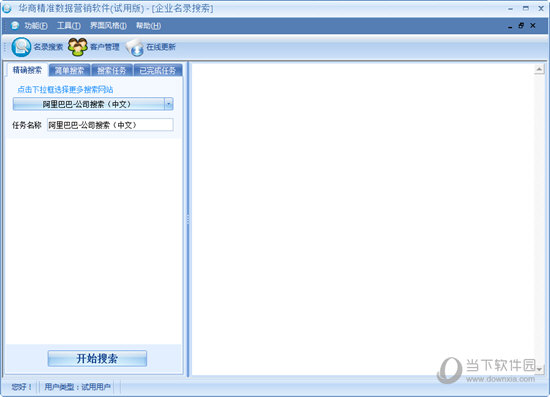Linux下execl学习下载
系统大全为您分享
Linux下头文件
#include
函数定义
int execl(const char *path, const char *arg, …);
函数说明
execl()其中后缀”l”代表list也就是参数列表的意思,第一参数path字符指针所指向要执行的文件路径, 接下来的参数代表执行该文件时传递的参数列表:argv[0],argv[1]… 最后一个参数须用空指针NULL作结束。
函数返回值
成功则不返回值, 失败返回-1, 失败原因存于errno中,可通过perror()打印
实例1:
root@wl-MS-7673:/home
/桌面/c++# cat -n execl.cpp
1 /* 执行 /bin/ls -al /ect/passwd */
2 #include
3 #include
4 using namespace std;
5 int main()
6 {
7 // 执行/bin目录下的ls, 第一参数为程序名ls, 第二个参数为”-al”, 第三个参数为”/etc/passwd”
8
9 if(execl(“/bin/ls”, “ls”, “-al”, “/etc/passwd”, (char *) 0) < 0)
10
11 {
12 cout<<"execl error"<
14 else
15 {
16 cout<<"success"<
18 return 0;
19 }
root@wl-MS-7673:/home
/桌面/c++# g++ execl.cpp -o execl
root@wl-MS-7673:/home
/桌面/c++# ./execl
-rw-r–r– 1 root root 1801 11月 28 09:46 /etc/passwd
root@wl-MS-7673:/home
/桌面/c++#
大家可以清楚的看到, 执行/bin目录下的ls, 第一参数为程序名ls, 第二个参数为”-al”, 第三个参数为”/etc/passwd”,但是没有输出success!!
这是为什么呢?
execl函数特点:
当进程调用一种exec函数时,该进程完全由新程序代换,而新程序则从其main函数开始执行。因为调用exec并不创建新进程,所以前后的进程ID并未改变。exec只是用另一个新程序替换了当前进程的正文、数据、堆和栈段。
用另一个新程序替换了当前进程的正文、数据、堆和栈段。
当前进程的正文都被替换了,那么execl后的语句,即便execl退出了,都不会被执行。
再看一段代码:
root@wl-MS-7673:/home
/桌面/c++# cat -n execl_test.cpp
1 #include
2 #include
3 #include
4
5 int main(int argc,char *argv[])
6 {
7 if(argc<2)
8 {
9 perror(“you haven,t input the filename,please try again!”);
10 exit(EXIT_FAILURE);
11
12 }
13 if(execl(“./file_creat”,”file_creat”,argv[1],NULL)<0)
14 perror(“execl error!”);
15 return 0;
16 }
17
root@wl-MS-7673:/home
/桌面/c++# cat -n file_creat.cpp
1 #include
2
3 #include
4
5 #include
pes.h>
6 #include
7 #include
8 void create_file(char *filename)
9 {
10 if(creat(filename,0666)<0)
11 {
12 printf(“create file %s failure!”,filename);
13 exit(EXIT_FAILURE);
14 }
15 else
16 {
17 printf(“create file %s success!”,filename);
18 }
19 }
20
21 int main(int argc,char *argv[])
22 {
23 if(argc<2)
24 {
25 printf(“you haven't input the filename,please try again!”);
26 exit(EXIT_FAILURE);
27 }
28 create_file(argv[1]);
29 exit(EXIT_SUCCESS);
30 }
31
32
root@wl-MS-7673:/home
/桌面/c++# g++ execl_test.cpp -o execl_test
root@wl-MS-7673:/home
/桌面/c++# g++ file_c
file_copy file_copy.cpp file_creat.cpp
root@wl-MS-7673:/home
/桌面/c++# g++ file_creat.cpp -o file_creat
root@wl-MS-7673:/home
/桌面/c++# ./execl_test
you haven,t input the filename,please try again!
: Success
root@wl-MS-7673:/home
/桌面/c++# ./execl_test file
create file file success!root@wl-MS-7673:/home
/桌面/c++#
以上就是系统大全给大家介绍的如何使的方法都有一定的了解了吧,好了,如果知识兔大家还想了解更多的资讯,那就赶紧点击系统大全官网吧。
本文来自系统大全http://www.win7cn.com/如需转载请注明!推荐:win7纯净版
下载仅供下载体验和测试学习,不得商用和正当使用。

![PICS3D 2020破解版[免加密]_Crosslight PICS3D 2020(含破解补丁)](/d/p156/2-220420222641552.jpg)




![SolidCAM 2021破解版[亲测可用]_SolidCAM 2021 SP1 破解版](/d/p156/2-21011Q60FLE.jpg)

